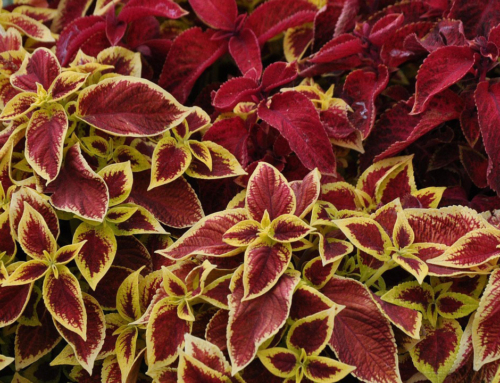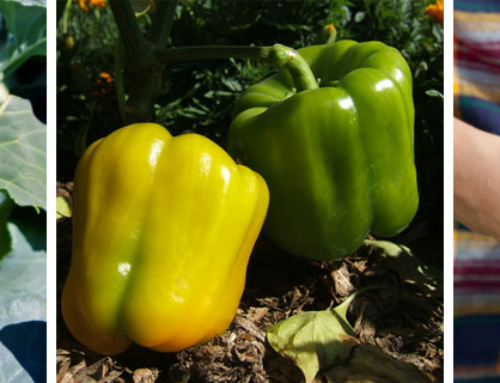Plan your garden now. You can use this time of year to decide what you want to grow and where and how you want to grow what you want to grow. Preparation can save you a lot of time and money and help make your growing season more enjoyable this year.
Where? If you are an experienced gardener, you probably have your site identified and are just waiting for the air and ground to warm up. If you are new to gardening, you need to consider some key factors. And, new or experienced, these factors can help you have a better garden. I recommend that you consider these four factors for where to site your garden.
- Location. How much sunlight does your yard receive? Select a site that receives at least six hours of sunlight a day, if you want to grow veggies such as tomatoes, peppers, eggplants, squash, and melons. If your yard has less sun, consider the leafy veggies. These can include the chards, beans, beet greens, dandelion, lettuces, mache, and raab for example.
- Water. You can rely on nature, but my thinking is that this year we will have another spell of hot and dry weather, especially in July and August. Depending on your soil, most veggies require about an inch of water a week. If your soil is sandy, your plants will need more water. You can haul the water by bucket, use a hose, or an irrigation system. What’s your pleasure? Keep your site convenient to a water source if at all possible. Your arms and back will appreciate it.
- Trees. Do not plant your veggies and herbs near trees. Trees need water and nutrients to survive. Planting your garden near them will deprive your veggies and herbs of the water and nutrients they need to prosper. Trees make shadows and those shadows “move” and change throughout the day. Shadows reduce the amount of direct sunlight and your plants will not produce as good a harvest. Depending on the size of your trees, keep your garden at least 30-40’ away, if at all possible.
- Terrain. Is your site in a lower part of your yard? Not so good. Colder air settles in these low sections. Plants develop slowly when the air and ground are cold. Water collects in these low areas and too much water will rot your seeds and reduce your harvest. Remember last spring? We had some very heavy gulley washers along with snow in May.
How? You may not have many options in your yard. You may not be able to find a site that meets the above four factors. Not to despair (yet). I suggest you consider the following options which may help you.
- Raised Beds. A raised bed can help you deal with a low area in your garden. Raised beds will allow you to grow deep-rooting varieties such as carrots and potatoes for example. I recommend a bed of at least 9”-24”. You can fill your beds with composted manure and store-bought soil, such as a black dirt-compost mix. A raised bed will allow you to overcome poor soil, such as clay or sand. Do not use all black dirt. It is too heavy and can tend to clump and compact.
- Containers. Containers are a type of raised bed. The main difference is that they allow you to move them and place them where you want. Whether you have a yard or have a patio or deck as your yard, you can grow anything, yes anything, in a container. I have grown corn, cucumbers, potatoes, tomatoes and almost everything in between. Use potting soil with some compost in your container.
- Zone Hardy. Which seeds and plants will do best? We are in Zone 4 (metro area) and you can plant and harvest almost any vegetable during our growing season. Check the maturity dates of the varieties you want to grow. Will you be able to harvest what you grow before we get our first frost (around mid-September). Ask your neighbors what worked best for them. Contact your local master gardener office for suggestions.
- Design it. Will you be planting in traditional single rows, use block planting, or square foot planting? Will you have walkways and how wide will they be? Will some varieties require support, such as a trellis or cages? Will some squash or melon vines take over your garden? How far apart should plants be from each other? Do you want to harvest an early variety and re-plant another variety in that same area? For example, after your kohlrabi or peas are done what do you want to plant after that? Do you want to companion plant and include early maturing lettuces between your tomatoes or peppers? Read the seed packets or descriptions in your garden catalogs to help you plan. Put your plan on paper (or the computer). Refer to it as you plant!
- Garden Calendars. I keep a calendar and a notebook to help me identify what I planted when, distances between plants and rows, any problems with insects and diseases, and what was the overall yield and flavor of what I grew. I have a soil test done every 3-5 years (University of Minnesota Soil Testing) so I know what is in my soil before I amend it. My calendars go back to 1976 when I moved into Edina. Keeping some sort of record or calendar will help you decide whether to plant the same varieties next year or look for alternatives.
Planning your garden is easy to do at any time of the year. It will help you organize yourself and your garden. It can help you realize greater success and the more success you have the more enjoyable will be your gardening experience, whether you are a new or experienced gardener.
By Larry Cipolla, Hennepin County Master Gardener




